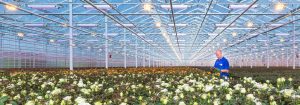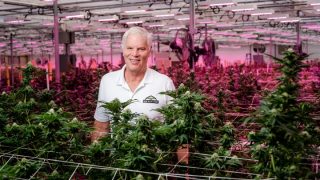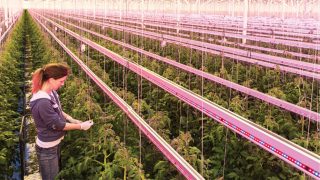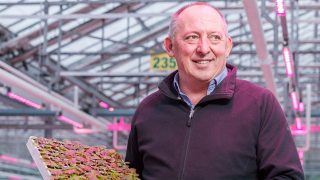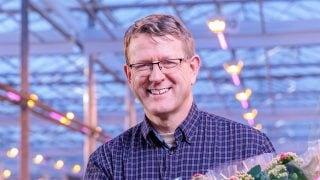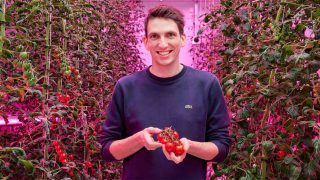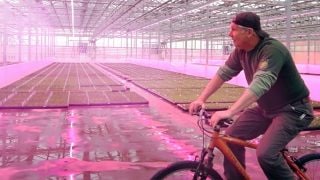Be the first! Get the latest news and updates - Subscribe to our newsletter!

Leo van der Harg
The Netherlands
Leo van der Harg BV is a champion flower grower. The company produces 5 million pot roses per year, occupying approximately 10% of the European market. Wanting to be recognised for the superior quality of its plant, the company sought a better way to control growing conditions.

LEDs are the future. That is why I am opting now for this solution.

The challenge
Van der Harg wants to be recognized for the superior and consistent quality of its plants. In order to realize this ambition, it needs the growing conditions to be optimum and controllable at all times. Prior to the construction of the new greenhouse the crop was lit exclusively by HPS, a lighting system that produces both light and heat of radiation. With this kind of lighting system it is not possible to control the temperature and the lighting completely independently of one another. During the winter this is not normally a problem, but in the spring and the fall in particular it can be restricting.
The right lighting
Leo van der Harg has a 36,000 m2 cultivation space at its disposal. In 2013, it added to this with a new 7,000 m2 greenhouse that would be used for blooming. Prior to construction of the new greenhouse, the crop was lit by HPS. This kind of system produces both heat and light, meaning the two factors cannot be controlled independently. During the winter this is not normally a problem, but in the spring and the fall it can be restricting.
Leo van der Harg, the company owner, had his sights set on LED. “Other projects have already proved that the installation of LED solutions facilitates management,” he explains. “This combination makes it easier to control the growing conditions. Because LEDs do not generate any radiant heat, it is possible to control the temperature and the lighting separately.”
A new lighting setup was installed using a compilation of LED and HPS grow light systems. The crop is illuminated for 5,000 hours a year, during 1,000 of which it is illuminated either only by LED or only by HPS. The type of lighting that is used during these 1,000 hours depends on the temperature in the greenhouse. This improved level of control results in sturdier, better quality plants – all year round.
The energy savings achieved by the new greenhouse lighting are more than 10%. Leo van der Harg reports that “the investment will pay for itself straight away, not just because of the energy savings, but also because of the improvement in plant quality.”

Philips GreenPower LED toplighting
Philips is introducing an LED-based toplighting solution for greenhouse growers, easy to install and no need for water cooling systems.
Contact us
Contact certified partners
Philips products are sold through a global network of certified partners. Find partners in your region for more information about Philips LED grow lights.
Contact Philips
What are the best LED grow lights for your situation? We are here to help. Please use our form to submit your request.
Subscribe to newsletter
Keep up to date about Philips LED lighting in horticulture by subscribing to our newsletter.
Join our team
Interested in discovering your recipe for growth and joining our team? Take a look at our career page for more information.
Interested?
Learn more about LED lighting in horticulture by reading our latest articles and case studies.

